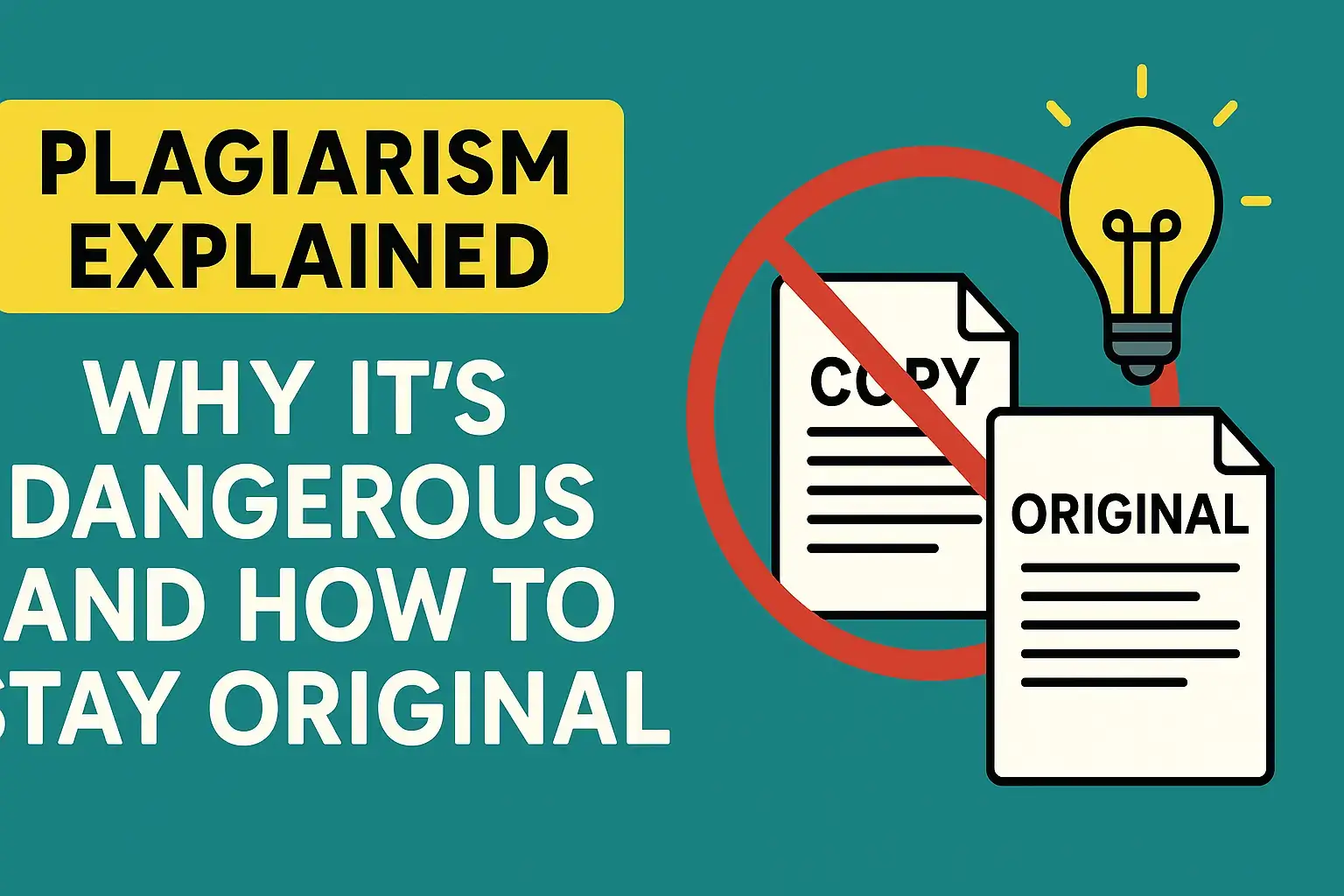
Today, the internet is full of content—like blogs, videos, essays, and social media posts. But with so much information, one big problem is growing: plagiarism.
Many people don’t know what it really means, why it’s bad, or how to avoid it. Don’t worry! This guide will explain everything in easy words and show how you can always stay original. It’s helpful for students, writers, bloggers—basically everyone!
🔍 What is Plagiarism?
Plagiarism means copying someone else’s words or ideas and pretending they’re your own. It’s like doing copy-paste from a website or friend’s work and putting your name on it.
🧾 Some Easy Examples:
- Copying text from a site without giving credit.
- Taking someone’s idea but not saying where you got it.
- Changing a few words but keeping the same meaning.
- Using AI-generated content without checking if it’s copied.
Sometimes, people don’t even know they are doing plagiarism. But whether by mistake or not—it can cause big problems.
⚠️ Why Plagiarism is a Big Problem?
1. ❌ People Won’t Trust You
If someone finds out your work is copied, they may stop trusting you. Whether you are in school or doing a job—honesty matters.
2. 🎓 School Trouble
Teachers and colleges take plagiarism very seriously. You can get:
- Low marks or even zero.
- Get suspended or kicked out of school.
- Have a bad mark on your report card forever.
3. ⚖️ Legal Trouble
In the working world, plagiarism can get you in legal trouble. You might have to pay a fine or face a court case.
4. 📉 Damage to Your Name
If your name gets linked to copied content, it can go viral for the wrong reason. Many writers and YouTubers have lost their careers because of plagiarism.
5. 🚫 Google Doesn’t Like It
If you run a website or blog, Google can lower your rank or hide your content. That means fewer people visit your site.
💡 Types of Plagiarism
| Type | What It Means |
|---|---|
| Direct Plagiarism | Copying text without giving credit. |
| Mosaic Plagiarism | Mixing your words with copied phrases. |
| Self-Plagiarism | Reusing your own old work as new. |
| Accidental | Forgetting to quote or give credit, even by mistake. |
🧠 Why Do People Copy?
- Hurry (rushing before a deadline).
- Pressure to do well.
- Don’t know how to give credit.
- Think no one will notice.
But today, plagiarism checkers are very smart. Schools, companies, and websites use them to catch copied work quickly.
✅ How to Stay Original (Tips for Everyone)
1. Read, Think, and Then Write
Don’t just copy. Try to understand the topic and then explain it in your own simple words.
2. Use Quotation Marks and Give Credit
If you must use someone’s words, put them in quotes and mention their name.
"Content is king," said Bill Gates (1996).
3. Write in Your Own Style
You can read and take ideas—but write them in your own way. Think: What would I say about this?
4. Use a Good Plagiarism Removal Tool
Even if you don’t copy, your content might still match someone else’s. That’s why using a tool like Plagiarism Remover is a smart move!
🛠️ Plagiarism Remover rewrites your content and makes it 100% unique—instantly!
Just paste your text, click “Remove Plagiarism,” and done.
Works great for students, writers, freelancers—and even AI content.
5. Keep a List of Your Sources
Write down where you got your ideas or facts. Tools like Google Docs or Zotero can help you organize them easily.
6. Always Double Check
Before sharing or submitting your work, use these tools to check for plagiarism:
- Grammarly
- Quetext
- Plagiarism Checker Tool
🎓 Who Should Be Careful About Plagiarism?
🧑🎓 Students
Copying in assignments can ruin your marks and future studies.
✍️ Bloggers & Writers
Google loves unique content! Copying can hurt your website traffic.
👨💼 Professionals & Researchers
If you copy in reports or papers, it can cost your job—and even go to court.
🎥 YouTubers & Script Writers
Copied scripts or stories can get your videos deleted or flagged.
📌 Final Words
Plagiarism might look small, but it can cause big damage—to your studies, job, or name. Being original is always better. It shows you are honest, smart, and creative!
Quick Checklist:
- ✅ Read and understand
- ✍️ Write in your own words
- 🔍 Use plagiarism checker
- 🚫 Fix it using Plagiarism Remover
Remember: You don’t need to be perfect. You just need to be real. Keep it original. Keep it yours. 💯